Occurrence Learn more about Occurrence
-
What is the occurrence regularity and harm of sugarcane borer? How to prevent and cure?

Sugarcane borer, also known as sugarcane borer, is a common and serious pest in sugarcane growth. So what is the occurrence regularity and harm of sugarcane borer? How to prevent and cure? First, what is the occurrence regularity and harm of sugarcane borer? The common borers in sugarcane fields are:
2020-11-09 Sugarcane borer occurrence regularity and harm what is it how -
Occurrence and control forecast of diseases and insect pests in Flos Lonicerae
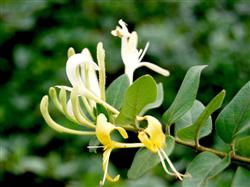
First, the current occurrence of diseases and pests of honeysuckle according to the systematic survey of our station on May 29: honeysuckle aphids were not found. The average plant rate of red spiders is 53.3%, the highest is 60.0%, the average rate of leaves is 15.7%, the highest is 31.3%, the highest is 38.0; the average mite index is 4.08, the most.
2018-07-18 -
Prediction of occurrence of soybean aphids

According to the investigation results of various measuring and forecasting stations in the province, combined with the comprehensive analysis of crop growth and meteorological conditions, it is expected that soybean aphids will occur moderately in the province this year, with less Rain Water in some cities and counties with large aphids in the early stage. The peak period of occurrence and damage of soybean aphid is from mid-July to early August. 1. The occurrence time is earlier than usual. According to the monitoring of various measuring and forecasting stations and plant protection stations in the province, the aphid period was found on June 10, which was later than that of last year, but still earlier than about 10 days all the year round. 2. Effect of meteorological conditions on soybean aphids.
2019-01-16 -
Prediction and control of diseases and insect pests of Ermai in Shanghai

According to the occurrence base of diseases and insect pests of two wheat crops in various districts (counties), combined with the analysis of weather conditions, it is expected that the occurrence trend of diseases and insect pests of two wheat crops in this city will be moderate this year. Among them, wheat scab occurred moderately, local heavy occurrence, gray planthopper heavy occurrence, local large occurrence, wheat aphid moderate occurrence, wheat powdery mildew, barley scab light occurrence, armyworm light occurrence. In order to effectively control the damage of diseases and pests and seize a bumper harvest of summer crops, it is hoped that all districts (counties) will conscientiously do a good job in the prevention and control of diseases and insect pests of summer crops in the light of their respective production practices. I. Analysis of occurrence trend
2019-01-16 -
Forecast of Occurrence Trend of Rice Stem Borer

I. Occurrence degree: It is estimated that the first generation of rice borer, the main pest of rice in our city, will occur moderately. The occurrence area of the whole city can reach more than 250,000 mu, among which the early planting idle field is more than 50,000 mu. Second, the occurrence period: April 11, moth under the lamp, moth initial peak period 5/9 - 12, moth peak period 5/20 - 24; egg incubation period 5/27 - 5/30, first and second instar larvae peak period 6/4 - 6/10, the occurrence period is 3 days later than the recent three years. III. Forecast basis 1. Development progress: 4/2 this year
2019-01-16 -
Occurrence and control of wheat sheath blight

According to the investigation of the measuring and reporting stations in various counties (cities and districts), at present, wheat sheath blight has been widespread and will enter the stage of epidemic damage, and all localities must seize the appropriate period and organize the broad masses of farmers to carry out prevention and control in time. First, the occurrence and trend analysis of the occurrence characteristics of wheat sheath blight this year: first, the occurrence period is normal, due to the low temperature last winter and spring, the growth of wheat seedlings is weak, which is not conducive to the occurrence of wheat sheath blight. The earliest Xiangshui in the city was first found in mid-February, and a large area was found at the end of February and early March. Second, the prevalence rate of the disease and
2019-01-16 -
Key factors and control measures for the occurrence of main heart borer in apple

Key factors and control measures of the occurrence of main heart borer in apple apple is the largest fruit in China, and its cultivated area and yield rank first in the world. In the 1990s, the state implemented pollution-free agricultural production in order to control fruit diseases and insect pests.
2018-06-22 -
What are the reasons for the occurrence and prevalence of peanut rust?
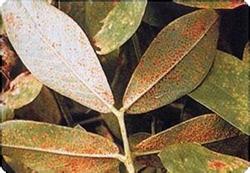
What are the reasons for the occurrence and prevalence of peanut rust? Peanut rust is a fungal disease caused by peanut stalk rust. The summer spores are yellow, round or nearly round, with micro-thorns on the surface, and there is a germination hole on each side of the middle part of the summer spores. Most summer spores produce only one germinating tube, which forms appressorium at the top of the germ tube.
2018-09-10 -
Occurrence and control of barley yellow mosaic disease
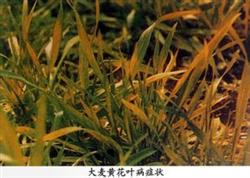
Barley yellow mosaic disease mainly occurred in Hubei, Zhejiang, Jiangsu, Shanghai and Anhui provinces and cities in the lower reaches of the Yangtze River, especially in Jiangsu, Zhejiang and Shanghai. The diseased plant died ahead of time, resulting in the decrease of ear setting rate, seed setting rate, 1000-grain weight, flour yield and quality of barley. Barley happens.
2018-09-11 -
Occurrence and control of spider mites in peanut species

Peanut spider mites are common in Zhaoyuan City, mainly cinnabar spider mites and two-spotted spider mites, of which the most and most serious are cinnabar spider mites, and the occurrence area of two-spotted spider mites is less, but there is a rising trend in Zhaoyuan in recent years. Peanut spider mite in recent years
2020-11-08 Species peanut leaf mite occurrence and control in -
Major diseases and pests of autumn grain crops have entered a peak period.

At present, it is a critical season for the growth of autumn grain crops such as rice, corn and potatoes. According to the monitoring of the national network for major crop diseases and pests, many kinds of diseases and pests, such as rice pests, rice blast, corn borer, potato late blight and so on, are increasing rapidly.
2016-01-10 Autumn grain crops major diseases and insect pests enter peak period at present it is -
The occurrence regularity of Robinia pseudoacacia seed wasps?

The occurrence rule of Robinia pseudoacacia seed wasps is as follows: two generations a year, the second generation larvae overwinter in the seeds, the overwintering generation larvae begin to pupate in the first and middle of May, adults appear and lay eggs in the middle and late days. The second generation larvae appeared from late May to early June, the first generation larvae began to pupate in mid-June, the first generation adults appeared from late June to early July, and the second generation larvae appeared from late June to mid-July and overwintered in the seeds. The occurrence time of each generation varies due to climatic conditions, but it is similar to Robinia pseudoacacia seeds.
2019-01-15 -
Prediction of moderate occurrence of pests in Hebei Province in the first half of the year
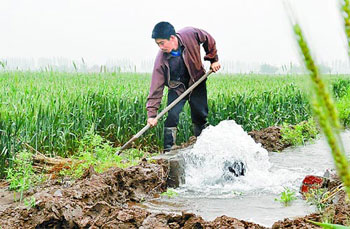
Prediction of moderate occurrence of pests in Hebei Province in the first half of the year
2019-02-21 -
What are the reasons for the occurrence of corn borer?
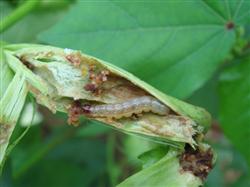
What are the reasons for the occurrence of corn borer? Please introduce the reasons for the occurrence of corn borer as follows: (1) population base: the population base of the previous generation is an important factor affecting the severity of corn borer damage. The number of insect population is large, which often causes serious damage under suitable environmental conditions. ...
2018-09-08 -
What are the control measures of tea caterpillar? What's the pattern of occurrence?

Tea caterpillar is an important pest in Chinese tea area. it is an insect of the genus Lepidoptera of the family Lepidoptera, also known as tea yellow moth, swinging head worm and so on. Tea caterpillars are distributed in all tea-producing provinces in China, mainly to harm tea, but also to Camellia oleifera, citrus and so on.
2020-11-11 Tea caterpillars control measures what occurrence regularity -
Occurrence characteristics and control techniques of rice false smut
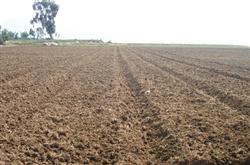
1. Occurrence characteristics of rice false smut disease only occurs in panicle, generally from flowering to milk ripening of rice. The infected grain grows in glume and forms rice false smut with a diameter of about 1 cm instead of rice grain. The optimum temperature for germination and development of Ustilaginoidea virens was 25~30℃, 34℃ or 12 ℃.
2018-09-13 -
What are the main cotton diseases and insect pests in summer and autumn?
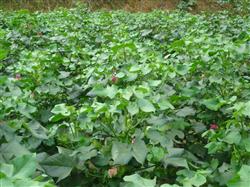
What are the main cotton diseases and insect pests in summer and autumn? Please introduce the main cotton diseases and insect pests and their control methods in summer and autumn: first, the occurrence trend of diseases and insect pests (1) Cotton blind bugs: it is expected to occur in the middle of the flowering and boll period, and the peak period of occurrence is from late August to early September.
2018-07-18 -
Control methods of Myrica rubra fruit fly
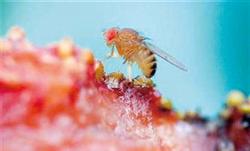
In recent years, the occurrence of fruit flies reduced the yield and quality of red bayberry, which seriously affected the economic development of red bayberry. In order to explore the occurrence regularity and control techniques of bayberry fruit fly, the author has observed the pest since 2008, and now basically found out its occurrence in our county and summed up the corresponding control techniques. Fruit fly.
2018-09-15 -
Occurrence and control of rice blast and rice planthopper
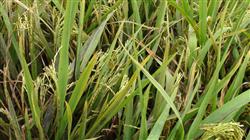
First, the occurrence of rice blast: Rice leaf blast has appeared in Helan, Qingtongxia and other places. The initial period is June 13, about 10 days earlier than last year. Especially after the rainfall on July 7 and 12, the humidity in the field is relatively high, which is very beneficial to the development of leaf blast. The average rate of disease fields in the recent general survey of Qingtongxia is 16.7%.
2018-09-13 -
Occurrence and Control of Yellow Peach Diseases

1. Peach leaf shrinking disease: the occurrence of the disease is closely related to the climate in early spring, such as low temperature (10 ~ 16 °C), long duration, high humidity and serious disease. When the temperature is above 21 °C, the disease basically stops developing. 2. Peach bacterial perforation: the pathogen of the disease overwinters in the diseased tissues of branches. After the beginning of spring, with the increase of temperature, the bacteria in the diseased tissue began to move. After the peach tree blossomed, the diseased spot epidermis ruptured, the diseased spot overflowed from the diseased tissue, and the bacteria spread through wind, rain and insects.
2019-01-15
